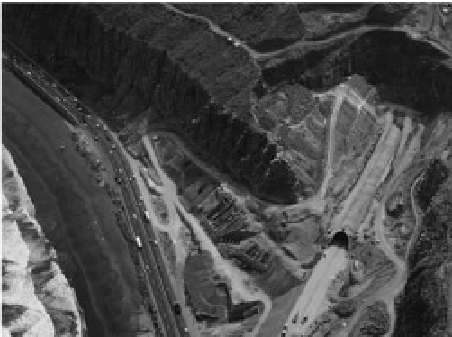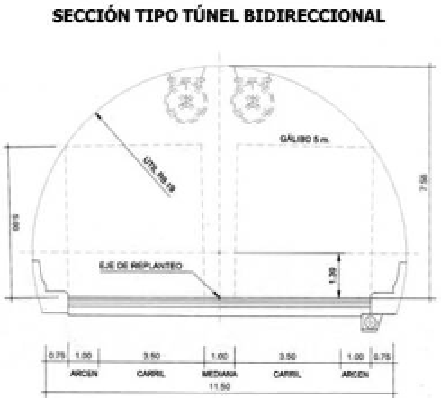Environmental Engineering Reference
In-Depth Information
chemical compositions, the type of excavation and
the construction method used in the preparation
of each tunnel.
5.2
Constructive methods and support elements
The most used method has been the new austrian
tunneling method, with advance-destroy and
advance with complete section. The geotechnical
problems more common have been the blocks fall
in wedge and flat roofs due to the morphology of
the gatecrashers and crossed deposits. The most
used elements have been the bolts, the projected
concrete and the revetment.
Materials have been considered favorable for
excavation and execution phases, although some
specific problems arise locally due to the solid state
that may have different local properties. The vari-
ety of geological materials are a constructive refer-
ence for future tunnels.
Figure 3.
adolfo cañas tunnel. construction phase.
ReFeRences
Peiró, R. 1997. caracterización geotécnica de los materi-
als volcánicos del archipiélago canario.
Tierra y Tec-
nología
17(1): 45-49.
linares, h. 1998. Túneles en las Palmas de Gran canaria.
III jornadas de carreteras
.
Geotécnia vial y túneles, Las
Palmas de Gran Canaria, 16-17 April 2008
.
González de Vallejo, l. & hijazo, T. 2008. engineering
geological properties of the volcanics rocks and soils
of the canary islands.
Soils and Rocks, Sao Paulo,
January-April 2008
. 31(1): 3-13.
Tamames, B. & Fernández, F. 2002. construcción de los
túneles del tramo arguineguín-Puerto Rico.
Ingeo-
pres
, 104(1): 58-68.
Figure 4.
ingeniero h. linares section tunnel view.
5
conclUsions
5.1
Generals considerations
The geometry and geomorphology of Grand
canary island, has created a need to carry out
work in the form of tunnels underground to allow
for road improvements in communications between
cities and touristic zones. The construction of such
tunnels has enabled the study of the geomechanical
behavior of many volcanic materials with different
















